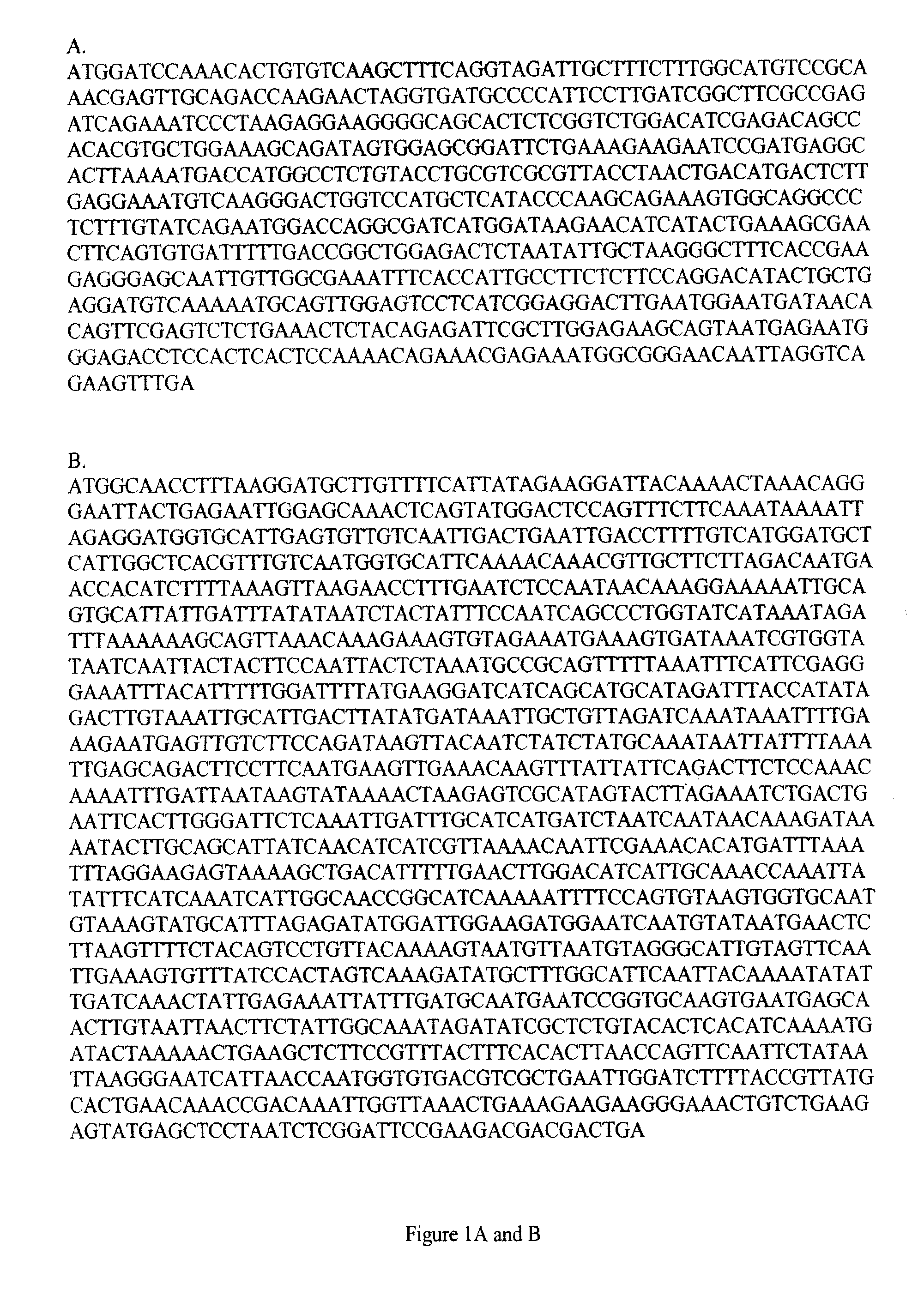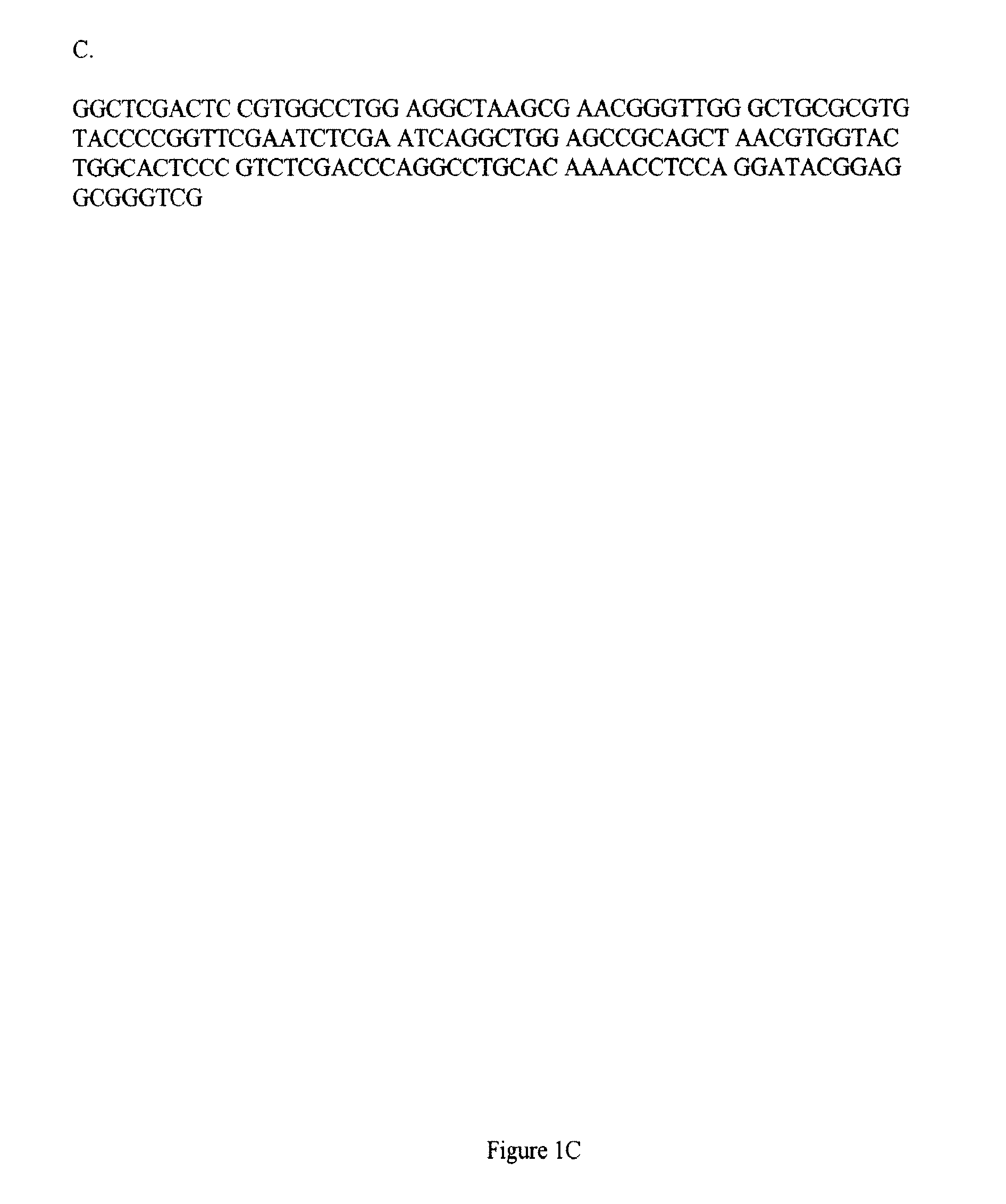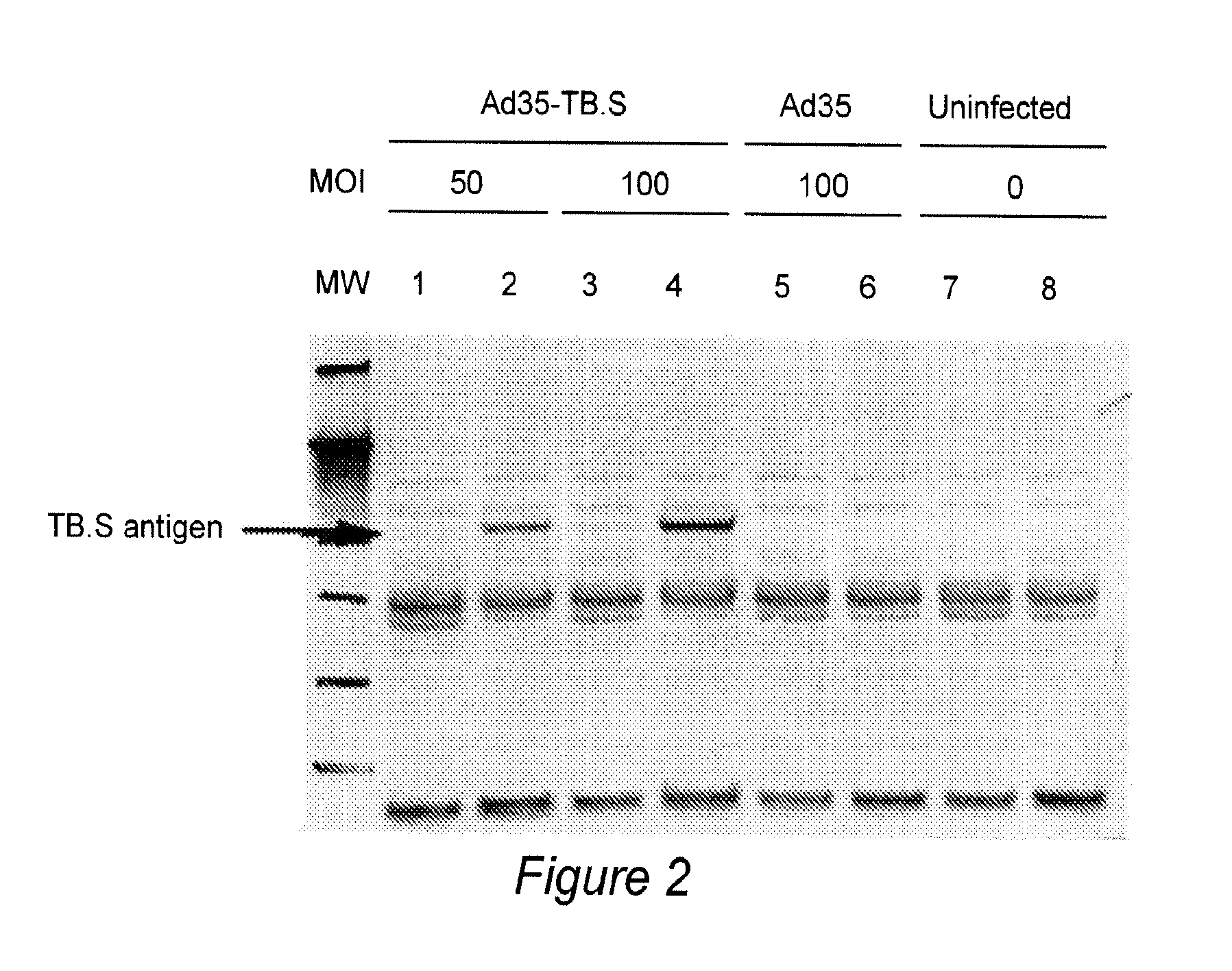Enhancement of transgene expression from viral-based vaccine vectors by expression of suppressors of the type i interferon response
a technology of suppressors and transgenes, applied in the field of enhancement of transgene expression from viral-based vaccine vectors, can solve the problems of insufficient production of antigens to elicit, unsatisfactory immunization efforts, and inability to produce sufficient antigens. , to achieve the effect of increasing the ability to produce an immunostimulatory response in a human or other mammal, and enhancing the delivery of proteins
- Summary
- Abstract
- Description
- Claims
- Application Information
AI Technical Summary
Benefits of technology
Problems solved by technology
Method used
Image
Examples
example
Example 1
IFN Antagonist Gene VAI Increases the Expression of TB.S Antigen
[0034]This experiment describes the use of an interferon antagonist gene to reduce the negative effects of IFNs on the expression of tuberculosis antigens cloned in an adenoviral vector. Experiments were designed and conducted as follows.
[0035]Ad35-TB.S is a replication deficient, E1 deleted derivative of adenovirus 35 which encodes a fusion protein of antigens 85A, 85B and TB 10.4 from M. tuberculosis. As with other group B adenoviruses, adenovirus 35 infects mammalian cells expressing the surface marker CD46 and thus is capable of infecting the vast majority of all nucleated human cells. The interferon antagonist gene used in this experiment was the virus-associated I (VAI) RNA gene. The VAI RNA gene product defends against cellular antiviral responses by blocking the activation of the interferon-induced, double-stranded RNA-activated protein kinase PKR (Galabru J, Katze M G, Robert N, Hovanessian A G. Eur J....
example 2
IFN Antagonist Gene NS1 Increases the Expression of Hemagluttin (HA) Protein
[0039]An adenoviral vector vaccine construct encoding the IFN I inhibitory protein NS1 from influenza virus and the hemagluttin (HA) protein of avian influenza H5N1 in a bicistronic expression cassette is prepared. Expression of the HA transgene in cells infected with this adenoviral vaccine construct is compared to expression in A549 and HeLa cells infected with an analogous adenoviral vaccine construct expressing the same HA transgene but not the NS1 protein. Higher levels of HA are expressed in cells in which NS1 is also expressed. This study validates the approach of using adenovirus vectors that, in addition to encoding and expressing transgenes of interest, encode and express suppressors of the type I interferon.
example 3
Enhancement of Immunogenicity of a Vaccine by the Inclusion of a Suppressor of the Type I IFN Response
[0040]To demonstrate the impact of suppression of the type I IFN response on viral vector elicited immune response, 3 groups of 10 BALB / c mice are vaccinated as follows. The first group receives only saline, 100 μl intramuscularly, the second group receives an adeno serotype 35 vector encoding a fusion of M. tuberculosis antigens 85A, 85B and RV3407 at 10e10 pfu intramuscularly, the third group receives an adeno serotype 35 vector encoding a fusion of M. tuberculosis antigens 85A, 85B and RV3407 and the VAI gene at 10e10 pfu intramuscularly. All animals are boosted with the same vaccines 2 weeks post-priming. Two weeks post boost all animals are euthanized and spleens and blood are collected.
[0041]Methods of measurement of immune and other biological responses to encoded products in animal models are well known to those skilled in the art. To measure serum IgG and IgA responses to t...
PUM
| Property | Measurement | Unit |
|---|---|---|
| Therapeutic | aaaaa | aaaaa |
| Immunogenicity | aaaaa | aaaaa |
Abstract
Description
Claims
Application Information
 Login to View More
Login to View More - R&D
- Intellectual Property
- Life Sciences
- Materials
- Tech Scout
- Unparalleled Data Quality
- Higher Quality Content
- 60% Fewer Hallucinations
Browse by: Latest US Patents, China's latest patents, Technical Efficacy Thesaurus, Application Domain, Technology Topic, Popular Technical Reports.
© 2025 PatSnap. All rights reserved.Legal|Privacy policy|Modern Slavery Act Transparency Statement|Sitemap|About US| Contact US: help@patsnap.com



